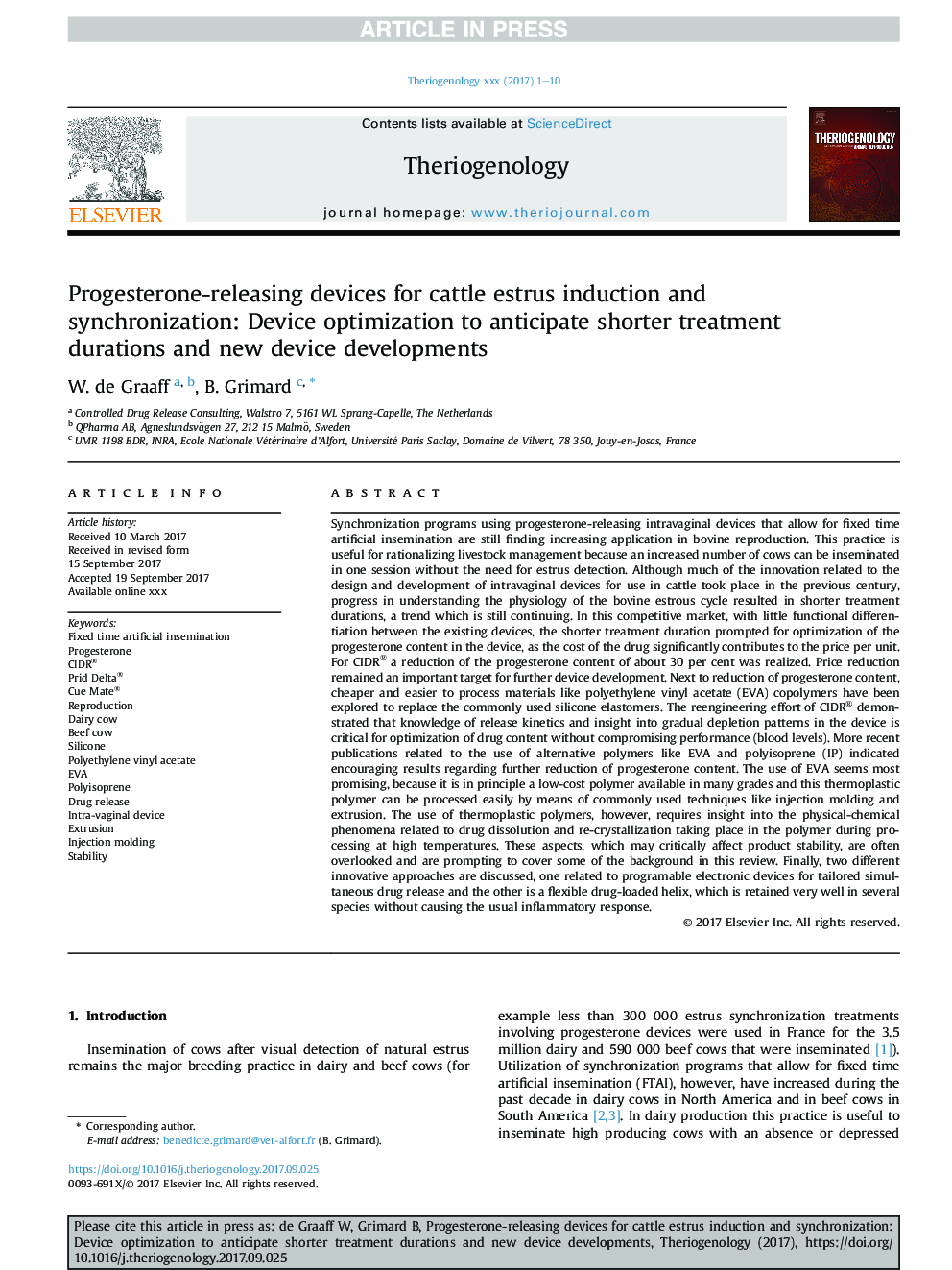| کد مقاله | کد نشریه | سال انتشار | مقاله انگلیسی | نسخه تمام متن |
|---|---|---|---|---|
| 8427230 | 1546057 | 2018 | 10 صفحه PDF | دانلود رایگان |
عنوان انگلیسی مقاله ISI
Progesterone-releasing devices for cattle estrus induction and synchronization: Device optimization to anticipate shorter treatment durations and new device developments
ترجمه فارسی عنوان
دستگاههای آزاد کننده پروژسترون برای القاء و هماهنگ سازی گاوها: بهینه سازی دستگاه برای پیش بینی زمان های کوتاه تر و پیشرفت دستگاه
دانلود مقاله + سفارش ترجمه
دانلود مقاله ISI انگلیسی
رایگان برای ایرانیان
کلمات کلیدی
موضوعات مرتبط
علوم زیستی و بیوفناوری
علوم کشاورزی و بیولوژیک
علوم دامی و جانورشناسی
چکیده انگلیسی
Synchronization programs using progesterone-releasing intravaginal devices that allow for fixed time artificial insemination are still finding increasing application in bovine reproduction. This practice is useful for rationalizing livestock management because an increased number of cows can be inseminated in one session without the need for estrus detection. Although much of the innovation related to the design and development of intravaginal devices for use in cattle took place in the previous century, progress in understanding the physiology of the bovine estrous cycle resulted in shorter treatment durations, a trend which is still continuing. In this competitive market, with little functional differentiation between the existing devices, the shorter treatment duration prompted for optimization of the progesterone content in the device, as the cost of the drug significantly contributes to the price per unit. For CIDR® a reduction of the progesterone content of about 30 per cent was realized. Price reduction remained an important target for further device development. Next to reduction of progesterone content, cheaper and easier to process materials like polyethylene vinyl acetate (EVA) copolymers have been explored to replace the commonly used silicone elastomers. The reengineering effort of CIDR® demonstrated that knowledge of release kinetics and insight into gradual depletion patterns in the device is critical for optimization of drug content without compromising performance (blood levels). More recent publications related to the use of alternative polymers like EVA and polyisoprene (IP) indicated encouraging results regarding further reduction of progesterone content. The use of EVA seems most promising, because it is in principle a low-cost polymer available in many grades and this thermoplastic polymer can be processed easily by means of commonly used techniques like injection molding and extrusion. The use of thermoplastic polymers, however, requires insight into the physical-chemical phenomena related to drug dissolution and re-crystallization taking place in the polymer during processing at high temperatures. These aspects, which may critically affect product stability, are often overlooked and are prompting to cover some of the background in this review. Finally, two different innovative approaches are discussed, one related to programable electronic devices for tailored simultaneous drug release and the other is a flexible drug-loaded helix, which is retained very well in several species without causing the usual inflammatory response.
ناشر
Database: Elsevier - ScienceDirect (ساینس دایرکت)
Journal: Theriogenology - Volume 112, May 2018, Pages 34-43
Journal: Theriogenology - Volume 112, May 2018, Pages 34-43
نویسندگان
W. de Graaff, B. Grimard,
